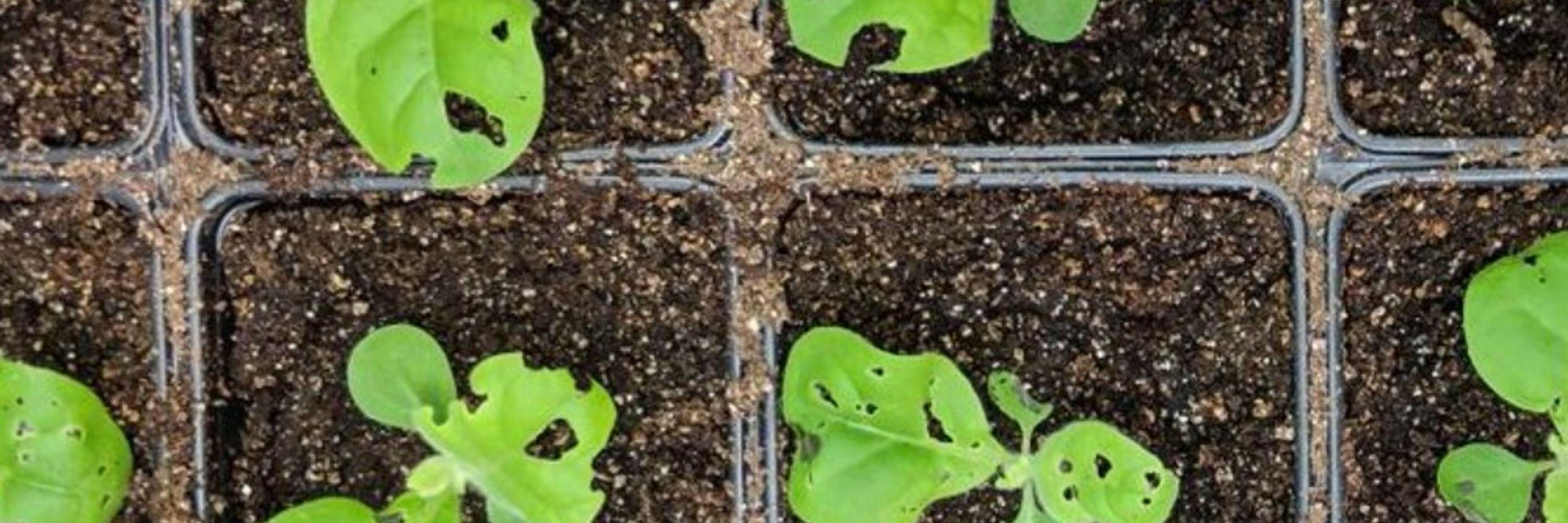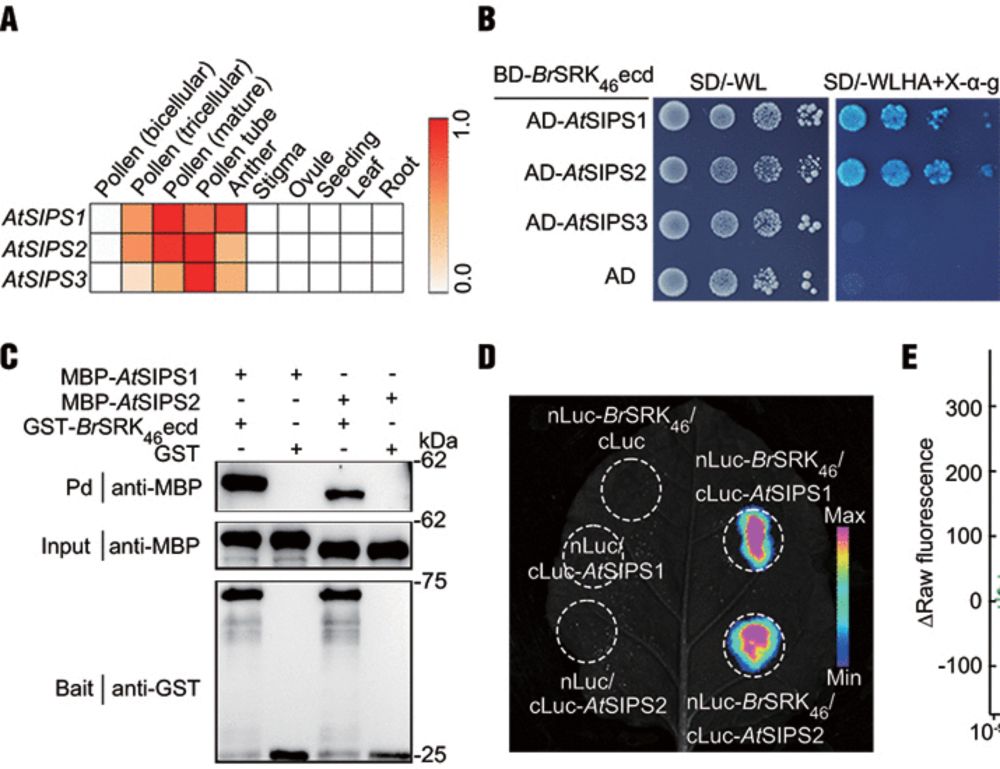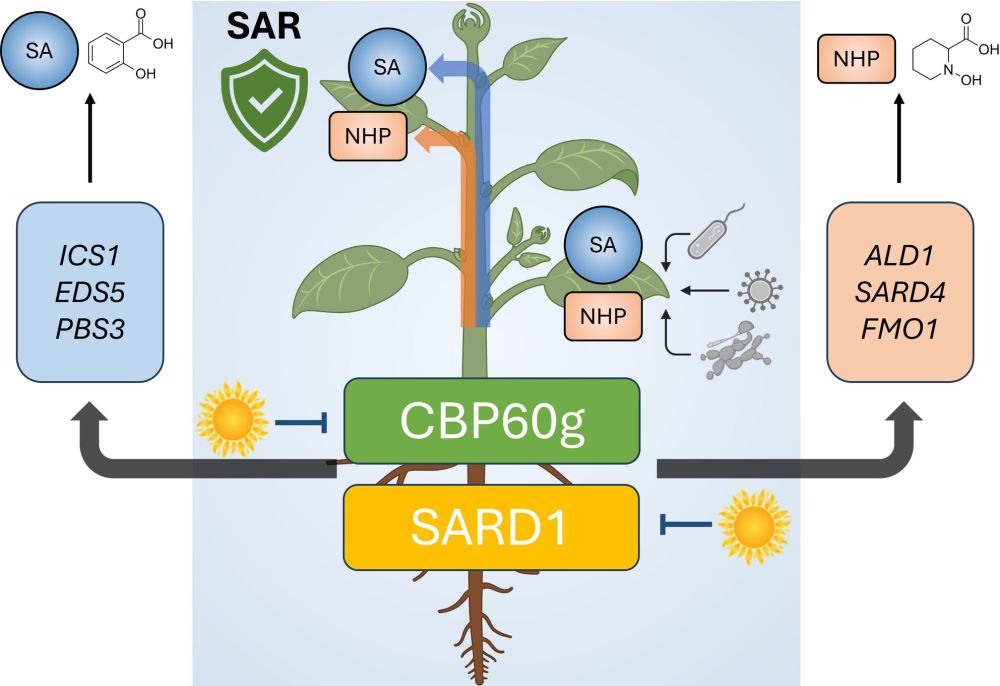
A pollen ligand, SIPS, binds to the female receptor, SRK. SIPS binds to a conserved region of SRK, for interspecific incompatibility, unlike the self-incompatibility factor, which binds to a different, variable region
www.science.org/doi/10.1126/...
#PlantScience

A pollen ligand, SIPS, binds to the female receptor, SRK. SIPS binds to a conserved region of SRK, for interspecific incompatibility, unlike the self-incompatibility factor, which binds to a different, variable region
www.science.org/doi/10.1126/...
#PlantScience
Please help us by filling out this questionnaire: docs.google.com/forms/d/e/1F...

Please help us by filling out this questionnaire: docs.google.com/forms/d/e/1F...
a 🧵 1/n
Drain: arxiv.org/abs/2511.04820
Strain: direct.mit.edu/qss/article/...
Oligopoly: direct.mit.edu/qss/article/...






Happy to take inquires via email (which can be found in the lab website) if you are applying this cycle.
Happy to take inquires via email (which can be found in the lab website) if you are applying this cycle.
The call for 𝐓𝐏𝐉 𝐅𝐞𝐥𝐥𝐨𝐰𝐬𝐡𝐢𝐩 𝐬𝐜𝐡𝐞𝐦𝐞 𝐟𝐨𝐫 𝟐𝟎𝟐𝟓 is now open! 🌟
It is designed to offer support and mentorship to researchers transitioning from post-doctoral scientists to principal investigators
Info: 👉http://onlinelibrary.wiley.com/page/journal/1365313x/homepage/TPJ-fellowships
& in 🧵

The call for 𝐓𝐏𝐉 𝐅𝐞𝐥𝐥𝐨𝐰𝐬𝐡𝐢𝐩 𝐬𝐜𝐡𝐞𝐦𝐞 𝐟𝐨𝐫 𝟐𝟎𝟐𝟓 is now open! 🌟
It is designed to offer support and mentorship to researchers transitioning from post-doctoral scientists to principal investigators
Info: 👉http://onlinelibrary.wiley.com/page/journal/1365313x/homepage/TPJ-fellowships
& in 🧵
We created a petition to NSF leadership and Congress to reverse the changes - please sign and share your stories here!!
laurenkuehne.github.io/grfpChanges/
We created a petition to NSF leadership and Congress to reverse the changes - please sign and share your stories here!!
laurenkuehne.github.io/grfpChanges/

Her pre-grad app was rejected without review for mentioning crop impacts.
I'm a previous recipient and served many years as a reviewer. The fellowship needs serious reform, not half-baked solicitation changes
Her pre-grad app was rejected without review for mentioning crop impacts.
I'm a previous recipient and served many years as a reviewer. The fellowship needs serious reform, not half-baked solicitation changes
Also the USDA fellowship RFA has still not been issued for this year.
It is harder and harder to find fellowships to support the newest generation of scientists. 🧪
We are shortchanging our future.
App deadlines now in November.
As others noted, eligibility rules for current graduate students now exclude 2nd year grad students. See the solicitation - they’ve emphasized “first year” and “less than one academic year” in grad program.
www.nsf.gov/funding/oppo...

Also the USDA fellowship RFA has still not been issued for this year.
It is harder and harder to find fellowships to support the newest generation of scientists. 🧪
We are shortchanging our future.

career5.successfactors.eu/career?caree...
career5.successfactors.eu/career?caree...
www.annualreviews.org/content/jour...
www.annualreviews.org/content/jour...
The Graduate Research Fellowship Program (GRFP) Workshop for Plant Researchers is returning in 2025. With NSF’s 2026 GRFP deadline set for Oct 27, we’re looking for mentors to guide student applicants.
Learn how you can help!
mailchi.mp/botany.org/b...

The Graduate Research Fellowship Program (GRFP) Workshop for Plant Researchers is returning in 2025. With NSF’s 2026 GRFP deadline set for Oct 27, we’re looking for mentors to guide student applicants.
Learn how you can help!
mailchi.mp/botany.org/b...
jobs.colostate.edu/postings/165...

jobs.colostate.edu/postings/165...

Our new bioRxiv preprint from star technicians Brian Behnken and Wesley George below 🧵
www.biorxiv.org/content/10.1...

Our new bioRxiv preprint from star technicians Brian Behnken and Wesley George below 🧵
www.biorxiv.org/content/10.1...
www.science.org/doi/10.1126/...

www.science.org/doi/10.1126/...
Our department has an open position at the Assitant Professor level 🌱

Our department has an open position at the Assitant Professor level 🌱
This work was initiated by my first MSc student Alyssa Shields. @laurierbiology.bsky.social
onlinelibrary.wiley.com/doi/10.1111/...

This work was initiated by my first MSc student Alyssa Shields. @laurierbiology.bsky.social
onlinelibrary.wiley.com/doi/10.1111/...
In our new preprint on Biorxiv we show that the host plant's immune system detects herbivory to sound the alarm. 🌱🐛
See thread from @nataliagupa.bsky.social -- a surprising role for a plant PRR in indirect defense against herbivores.

In our new preprint on Biorxiv we show that the host plant's immune system detects herbivory to sound the alarm. 🌱🐛
See thread from @nataliagupa.bsky.social -- a surprising role for a plant PRR in indirect defense against herbivores.

